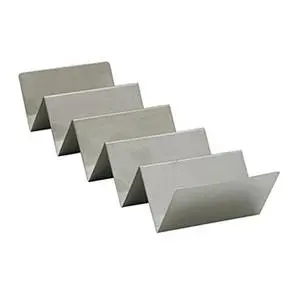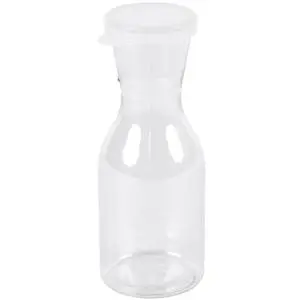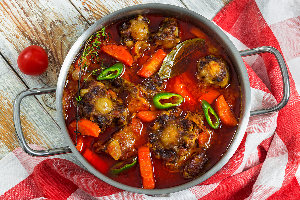
Mexican restaurants rely on unique equipment to produce amazing cuisine in the U.S.
Thinking about opening a Mexican Restaurant business? Shopping for Mexican restaurant supplies?
You’re not alone. This amazing cuisine has developed a loyal following in America, including a weekly excuse to eat tacos and an annual holiday that’s celebrated more here than south of the border.
Mexican food is the second-most popular menu selection in the United States, representing approximately nine percent of the nation's restaurants, according to an April 2017 report by CHD Expert, which analyzes foodservice and hospitality data.
That's an awful lot of tacos and tamales... enchiladas and churros... guacamole and grilled corn! (More than 59,000 Mexican restaurants, to be exact).
Take that, burgers and pizza!
Another interesting fact: In an industry where today's popular eatery can quickly become tomorrow's closed restaurant, Mexican food has endured: More than 60 percent of Mexican restaurants in the U.S. have been in operation for more than five years.
And, a large majority of Mexican restaurants - more than 95 percent - have maintained their "independent status" (foodservice operations with nine or fewer units).
Is your soon-to-open Mexican restaurant the next quick service or fast casual operation in your town?
We want to help. Our restaurant equipment specialists at ACityDiscount have identified a checklist of equipment commonly found in Mexican restaurants. These Mexican restaurant supplies will save you and your staff time and money - because efficiency in a commercial kitchen is just as important as taste.
Check out our list below and let us know what you think about our Mexican restaurant supplies.
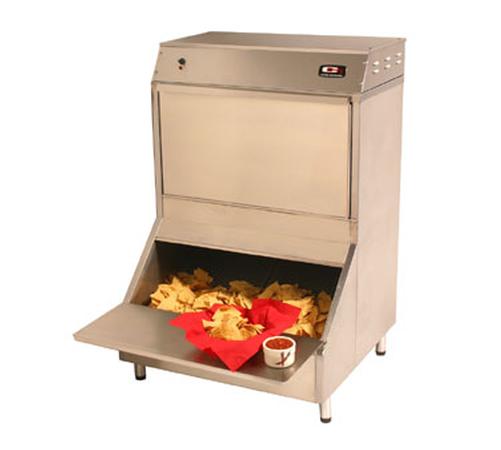
Sell This: Freshly-fried taco shells, Taco Salad bowls, tortilla chips
Buy This: Deep fryers, fryer baskets, chip warmers
These fried items are staples Mexican restaurants from Texas to New York, making commercial deep fryers vital to any commercial kitchen. In addition to a fryer, specific baskets are needed to shape and form taco shells and taco salad bowls to increase efficiency. Meanwhile, a chip warmer keeps large volumes of fried chips warm for extended periods of time.
Sell This: Ground beef, sautéed pepper and onion blends, sauces (Mole, queso dip)
Mexican restaurants often require a range top to cook sauces such as mole or queso dip. However, it’s a good idea to consider a range with a griddle top. Many Mexican restaurateurs use a griddle to cook large quantities of ground beef or sauté pepper and onion blends, but do not need to have their griddle constantly running. That's why a range with a griddle would be a great way to save on initial costs and space.
Sell This: Frozen Margaritas
Buy This: Margarita Machines
Mexican restaurants sell enormous amounts of frozen beverages, and blending drink after drink gets time consuming. If your bar can’t keep up, you’re losing money... Installing a Margarita Machine behind the bar save bartenders time without sacrificing quality passed on to customers. See our line of Frozen Drink & Margarita Machines.
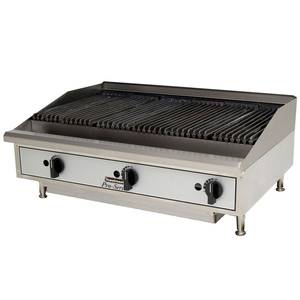
Sell This: A variety of proteins
Buy This: Charbroiler
Most of the proteins prepared in a Mexican restaurant (aside from ground meats) will be cooked on a Charbroiler. Figure out expected volume of cooking, and whether or not customers' proteins will be cooked in advance.
Sell This: Heated soft tortillas
Buy This: Tortilla steamer
They are the most popular way to heat soft tortillas in a commercial environment. A Flash Steamer heats tortillas in seconds, making them more malleable without excessively heating or drying out the shell.
Sell This: Salsa, pico de gaillo, hot sauce, vegetables
Buy This: Vegetable Prep
Every Mexican restaurant should own a Slicer/Dicer, a Lettuce Cutter, a Food Processor, and even possibly a Citrus Wedger (for lime garnishes or margaritas) to speed up prep work... which equates to faster service and therefore, an increase in revenue during busy periods.
Also Buy This: Buffet Wells / Salsa Bar
A mainstay in most Mexican restaurants with a dining area, a Salsa Bar gives customers a fresh array of salsa and sauce options. These buffets vary in shape and size depending on how business owners stock them. Drop-in hot/cold wells (separate or combination wells), as well as round wells for hot dips like queso, serviceware, and countertop dispensing equipment for items like plastic ramekins are essential for salsa bars.
What is Mexican Food?
Mexican food is a blend of Indigenous peoples of Mexico and other influences, including Spanish, Caribbean, South American and other regions of the world.
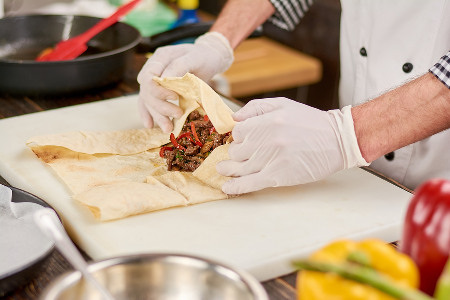
Native Mexicans, which included the Aztecs, the Maya and the Zapotec, relied on a diet of corn, beans, peppers, tomatoes, sweet potatoes and herbs. Other items you might find in a market included pineapple, avocado, squash, pumpkin, papaya, vanilla and chocolate, considered an item for the rich. Market places also sold salsa.
The Spanish introduced lime and other citrus fruits to Mexico, influencing Mexico's coastal cuisine with items like ceviche, which is not believed to be native to Mexico. The Spanish also introduced new livestock, such as pigs and sheep. So the cheese, pork, beef and lettuce in most of today's tacos are traced back to Spanish rule in Mexico.
Tex-Mex is very popular in the United States – perhaps more popular than authentic Mexican food.
How do you know if you’re eating Tex-Mex? If the ingredients include beef, wheat flour, yellow cheese, black beans or cumin, the recipe originated in the Southwestern United States... yes, nachos, chili con carne, canned vegetables and fajitas too.
Traditional cooking supplies ranged from the metate and molinillo (de chocolate) to molcajete or comal. Nowadays, Mexican restaurant supplies allow foodservice operators to produce tasty cuisine in minutes.
What is Cinco De Mayo, and what impact does it have on Mexican restaurants?
In Spanish, it translates to "Fifth of May." Not to be confused with Mexican Independence Day (Sept. 15), Cinco de Mayo marks the defeat of the French army in 1862 at the Battle of Puebla. Every May 5, an estimated 81 million avocados are consumed, according to the the California Avocado Commission. Did You Know? As of April 2017, Taco Bell comprised 41 percent of all Limited Service Restaurant chain restaurants offering Mexican cuisine, followed by Chipotle Mexican Grill (15 percent), Qdoba Mexican Grill (four percent), Moe's Southwest Grill (four percent) and Del Taco (four percent). The highest price point for checks at Mexican restaurants is $10-15 (37 percent). The top three states in terms of Mexican cuisine popularity (based on number of units) are Texas (18 percent), New Mexico (14 percent) and California (13 percent).
More questions about Mexican restaurant supplies? Give ACityDiscount a call at 404-752-6715 or stop by our showroom in the Atlanta suburb of Norcross at 6286 Dawson Blvd, NE.



